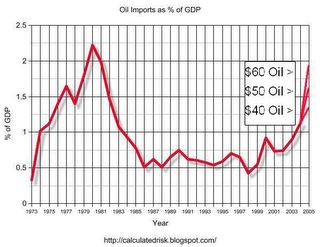The Peak production of Silver/Gold has passed us by. Hurry hoard that silverware.
Hat tip to Roger Nusbaum. As you can see I had added Roger to my Blogroll.
Recently Roger was talking about gold and of course he takes a joke well when I said that peak gold production had already passed us by and that we should hoard some gold. Along that same thread, today I wanted to talk about some of the issues that Roger brought up in the above link.
So with no further ado, the question I want to try and answer is:
The idea behind this numberless assertion is that silver gets consumed where gold does not.One link that agrees with that conclusion is Financial Sense Online.
A little information about silver:
Demand for silver is built on three main pillars; industrial and decorative uses, photography and jewelry & silverware. Together, these three categories represent more than 95 percent of annual silver consumption.
While the article is very interesting on the various uses of silver that either is not recoverable or is lost by a percentage in the process, but I disagree with the last sentence of "There is no substitute for silver." Being an economist, we always assume that there are substitutes for nearly everything. It is only a matter of price or value that a substitute will cost. Other than industrial uses and health uses, I would say all have easy substitutes right now.
One way societies have adjusted the consumption of both silver and gold was the transition from metal currencies to paper (25 percent linen and 75 percent cotton). At the Silver Stock Report it states:
Silver is cheap because silver is not being used as money anywhere in the world. Reduced demand for silver money causes a reduced price. This trend has taken over 100 years to fully develop.
The second trend is the age of electronics that began at the end of World War II, and has now lasted 60 years. Annual consumption of silver exploded upwards, about 10 times greater than before, and an average person in a first world nation consumes seven tenths of an ounce of silver per year. This has resulted in the consumption of about 90% of all the silver in the world, during a time when the world was reducing demand for silver as money.
The third trend is the abnormally large growth, in every nation of the world, of paper money not backed by any precious metal.
Yes I don't believe the conspiracy theories and that the system is built on fraud, but it had some points about the transition mentioned above.
And this should be interesting for investors if true:
Current monetary demand for silver is zero. Investment demand stands at a tiny 25 million oz. per year, out of 600 to 700 million oz. produced per year. I believe that a single billionaire could push up the price of silver to well over $25/oz. with less than $1 billion dollars of buying power.
In contrast, today, M3 www.federalreserve.gov/releases/h6/Current/ is 9567 billion. Divided by $422/oz., that paper should be worth 22 billion oz. of gold. The gold value is shrinking!
As you all should be aware, what value is a paper bond paying 5% if inflation is at 10% per year? It's a guaranteed loss of 5% per year! The government lies about inflation rates!
I want to do a post on M3, but for now let me say that inflation is not affected by M3 or to a lesser degree M2. M1 that is the transaction demand for money, meaning that consumers only want to hold the amount of M1 that will be used for expected purchases.
For example, I calculated in the original essay that at current production and consumption rates for the year 2000, we had only enough ore remaining to supply mining operations for another 16 years. With updated numbers, that number has dropped to near 13 years. If those numbers do not impress you, I think they should. Why you ask? When any scarce resource runs out or runs low many things happen. First of all the price of the resource rises (sometimes exponentially). Everyone scrambles to find new sources for the resource or substitutes for the resource. Almost surely, any new sources of the resource are harder to obtain and certainly more costly due to many factors too numerous to discuss here. In the case of gold, there are few substitutes and the ones available will also skyrocket in price. So, that is why all of us should be interested in this situation.
Yes some of the effects he talks about is true, but more than likely the market will adjust by the fact that the needs for gold will go down. As the price goes up then less gold will be demanded. Central banks can also sell to the market and if the price skyrockets I will melt my gold ring!
I will briefly update the supply/demand numbers that are used to determine the 13-year life of existing ores. In the U.S. Geological Survey report on gold in 2002, they have the following to say on the above ground gold supply. "Of an estimated 140,000 tons of gold ever mined (Worldwide), about 15% is thought to have been lost, used in dissipative industrial uses, or otherwise unrecoverable or unaccounted for. Of the remaining 120,000 tons, an estimated 33,000 tons is in official stocks held by central banks and about 87,000 tons is privately held as coin, bullion, and jewelry." It is the 33,000 tons of central bank gold that has helped create a problem. On first glance, having 33,000 tons of gold sitting in central bank vaults, approximately 24% of all the gold mined from the dawn of civilization, appears like a great overhang of supply to the present market.
I will assume the numbers are close enough.
We now need to review the recent supply/demand numbers for gold. Turning to the USGS official publications, we find they list worldwide mine production for gold at 2,550 tons in 2000, and 2,530 tons in 2001. The average for these two years is 2,540 tons, so we will use this figure in our analysis. On the demand side, according to the WGC's latest publication, the 2000 usage was 3,794 tons and 2001 3732 tons. We should note that the WGC states in the literature that these numbers are not complete; because they only include statistics from countries they feel have reliable numbers. An estimate for the total world demand would be at least 10% higher than these numbers. In this analysis, we will use a conservative number for world usage of 3,760 tons; fully realizing this figure is probably low by several hundred tons. When we compare these numbers, 2,540 tons of supply and 3,760 tons of demand, we come up with a deficit of 1,220 tons annually (Other sources project this deficit to be much larger and we will discuss that aspect later). This deficit has been covered from central bank holdings.
These numbers seem like they are real enough for analysis.
How much gold remains unmined in the crust of the earth for future mining operations? For this number we go again to the USGS. Their most recent official publication states that there remains only 50,000 tons of gold available for future recovery (see Note 1 below). This should turn on a light bulb in our consciousness. Let's examine why!
We previously mentioned that from the dawn of civilization only 140,000 tons of gold has been mined. Of this amount, only about 120,000 tons remain. We just learned that from now until the end of time we have only 50,000 more tons of gold available. That is a frightening revelation. We are consuming gold at the rate of 3,760 tons per year. That means we only have about 13 years of gold available until we run out of gold to mine (that number was 16 in my original essay).
So only 13 short years more of gold!
For a more reliable and current place for information on gold World Gold
Council. Nearly 88% of gold use is for jewelry/investments that could use alternatives or reduced consumption. But the 12% is still considered consumption for industrial and dental that is not recoverable.
The Daily Kos articles (Silver ETF Denied by the SEC - Shortage Confirmed and Gold hits New ALL-TIME HIGH €352 per oz had little value except to state that there are naked short positions in the market. And my supervisor has said that there are naked short sells in the stock markets. But I can not say too much about this.
From the US Commodity Futures Trading Commission, which has some responses about short selling.
Tangible usable assets (commodities) will always have some value. My last point I would like to make is that any market that has some violatility can earn money but over the long run commodities tend to stay the same price or increase less than inflation.
Environmental Scientist: Dr. Paul Ehrlich
Perhaps Ehrlich's best known blunder is a 1980 bet he made with University of Maryland economist Julian Simon. Dr. Simon, who believes that human ingenuity holds the answers to population growth problems, asserted that if Ehrlich were correct and the world truly was heading toward an era of scarcity, then the price of various commodities would rise over time. Simon predicted that prices would fall instead and challenged Ehrlich to pick any commodity and any future date to illustrate his point. Ehrlich accepted the challenge: In October 1980, he purchased $1,000 worth of five metals ($200 each) -- tin, tungsten, copper, nickel and chrome. Ehrlich bet that if the combined value of all five metals he purchased was higher in 1990, Simon would have to pay him the difference. If the prices turned out to be lower, Ehrlich would pay Simon the difference. Ten years later, Ehrlich sent Simon a check for $576 -- all five metals had fallen in price.
So unlike equities that over time tend to earn 10-12% per year commodities tend to earn 0% or negative rates of return.
PS: From Rogers comments "Something I read said that demand from photography is is waning because of digital cameras. I can't cite numbers but it makes intuitive sense."
As the world’s technology advances, the consumption of silver advances. Today photography consumes most of the silver, tomorrow it will be electronics and other new technologies that may rival photography in their demand. Two areas that have recently been reported are superconductivity and the use of silver as a replacement for arsenic as a wood preservative.Reflecting on Silver
And be sure to check out these sites:
The Silver Story
Despite digital photos, silver is looking good
As far a silver for photography, it does not look like the demand will decrease at least by much. But with human ingenuity we have little to worry about in the long run. Sorry for such a vague answer.
Now I will admit that on a micro level that silver consumption is outpacing gold, but on a macroeconomic level I still hold that silver will not even beat inflation for the next 10 to 20 years or ever on the long term basis.
Links:
Dr. Paul Ehrlich
Uses of Silver
M3? and Silver Conspiracy
Daily Kos???
GOLD OUTLOOK from 2000 to 2020 - REVISED
Silver Could Have Even More Upside Potential Than Gold










